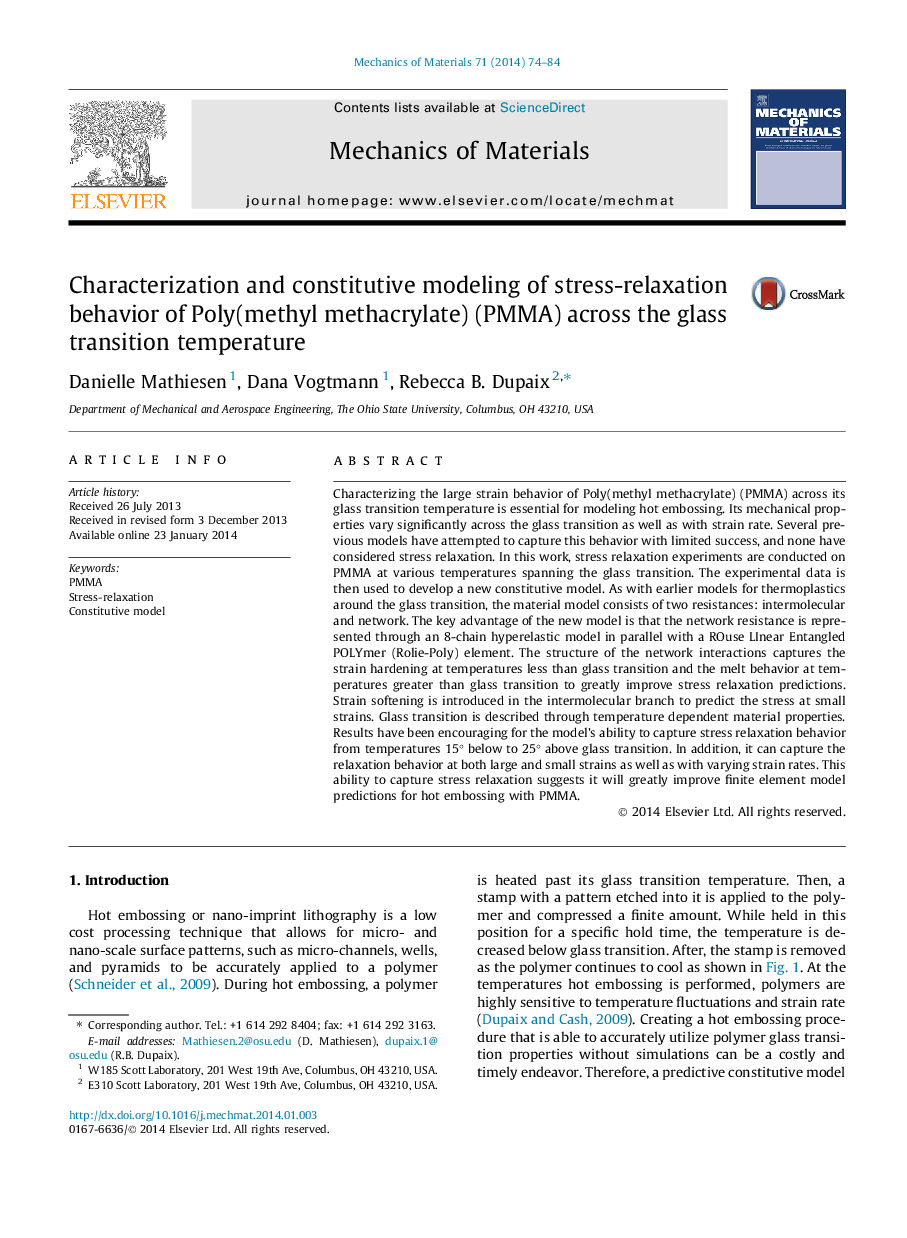| کد مقاله | کد نشریه | سال انتشار | مقاله انگلیسی | نسخه تمام متن |
|---|---|---|---|---|
| 7178696 | 1467470 | 2014 | 11 صفحه PDF | دانلود رایگان |
عنوان انگلیسی مقاله ISI
Characterization and constitutive modeling of stress-relaxation behavior of Poly(methyl methacrylate) (PMMA) across the glass transition temperature
دانلود مقاله + سفارش ترجمه
دانلود مقاله ISI انگلیسی
رایگان برای ایرانیان
کلمات کلیدی
موضوعات مرتبط
مهندسی و علوم پایه
سایر رشته های مهندسی
مهندسی مکانیک
پیش نمایش صفحه اول مقاله

چکیده انگلیسی
Characterizing the large strain behavior of Poly(methyl methacrylate) (PMMA) across its glass transition temperature is essential for modeling hot embossing. Its mechanical properties vary significantly across the glass transition as well as with strain rate. Several previous models have attempted to capture this behavior with limited success, and none have considered stress relaxation. In this work, stress relaxation experiments are conducted on PMMA at various temperatures spanning the glass transition. The experimental data is then used to develop a new constitutive model. As with earlier models for thermoplastics around the glass transition, the material model consists of two resistances: intermolecular and network. The key advantage of the new model is that the network resistance is represented through an 8-chain hyperelastic model in parallel with a ROuse LInear Entangled POLYmer (Rolie-Poly) element. The structure of the network interactions captures the strain hardening at temperatures less than glass transition and the melt behavior at temperatures greater than glass transition to greatly improve stress relaxation predictions. Strain softening is introduced in the intermolecular branch to predict the stress at small strains. Glass transition is described through temperature dependent material properties. Results have been encouraging for the model's ability to capture stress relaxation behavior from temperatures 15° below to 25° above glass transition. In addition, it can capture the relaxation behavior at both large and small strains as well as with varying strain rates. This ability to capture stress relaxation suggests it will greatly improve finite element model predictions for hot embossing with PMMA.
ناشر
Database: Elsevier - ScienceDirect (ساینس دایرکت)
Journal: Mechanics of Materials - Volume 71, April 2014, Pages 74-84
Journal: Mechanics of Materials - Volume 71, April 2014, Pages 74-84
نویسندگان
Danielle Mathiesen, Dana Vogtmann, Rebecca B. Dupaix,